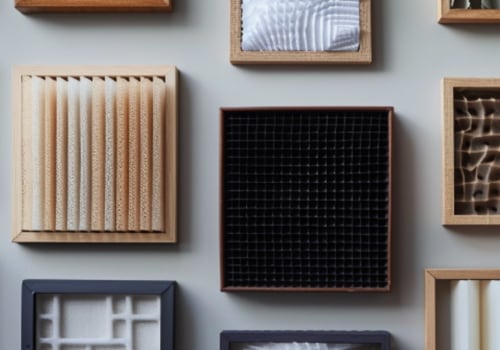HEPA filters are renowned for their ability to capture large particles such as pet dander, pollen, and dust mites. However, other particles can still be present in the filter, which we will discuss in the next section. In Auto mode (similar to medium; the air does not contain a particle counter to adjust to air conditions, but instead asks you to enter the approximate size of your room, after which the machine chooses a fan speed that Molekule deems appropriate), the air performed worse, reducing particles by 0.3 microns at only 18.0% (ambient) and 26.4% (clean). In Silent mode, it performed even worse, reducing 0.3 micron particles by 6.5% (ambient) and 7.2% (clean).
And in Dark plus Auto, with its primary PECO purification system turned off and its fan at the equivalent of a medium setting, it reduced them by 21.3% (ambient) and 18.0% (clean). Interestingly, those numbers closely reflect our results in automatic configuration with the PECO system activated, suggesting the possibility that the Molekule Air relies primarily on its physical prefilter, not its patented PECO mechanism, to remove particles. Using a HEPA filter in your home can remove most airborne particles that could worsen allergies. But airborne particles aren't the only ones in your home. There's so much more to your carpets, bedding and curtains, and it rests on countertops and tables.
Therefore, it is important to keep these areas clean. It is also important, where possible, to eliminate the source of allergens and irritants. For example, the only effective way to keep tobacco smoke out of your home is to not smoke. Before you invest money in an air purifier, you should consider running an air quality test at home first to see if you need it. That's not just a financial concern; since air purifiers work best when cleaning a single room, it's worth considering separate machines for, say, the bedroom and living room. An air purifier can work in conjunction with a high-efficiency particulate air (HEPA) filter, the latter of which is best known for trapping airborne allergens.
A HEPA filter is a type of mechanical air filter; it works by forcing air through a fine mesh that traps harmful particles such as pollen, pet dander, dust mites, and tobacco smoke. On the other hand, in HEPA purifiers, a fan draws airborne particles through a dense felt-like filter that has billions of small voids of different sizes. In its Boost configuration, when it was moving the maximum amount of air, the air could reduce 0.3 micron particles by 61.3% under ambient starting conditions and 57.0% under clean starting conditions. In addition, Cabiclean and Durabasics filters fit perfectly into the machine, hermetically sealing their edges to prevent unfiltered air from escaping another important factor in HEPA performance. Unfortunately, mold, VOCs (Volatile Organic Compounds), viruses, bacteria, and small particles smaller than 0.3 microns cannot be safely removed from the air with a HEPA-based air purifier. If you have specific concerns about VOCs, the HM400 is by far the best portable air purifier we've found. The Air Purifier 6 performed very well too; as you would expect from a machine with a Clean Air Delivery Rate (CADR) of 325 cubic feet per minute.Addition of two HEPA air purifiers that met the Environmental Protection Agency (EPA) recommended Clean Air Delivery Rate (CADR) reduced overall exposure to simulated exhaled aerosol particles by up to 65% without universal masking. HEPA stands for high-efficiency particulate air and refers to the fact that HEPA filters allow air to pass through with little resistance while quickly capturing almost all of the particles that the air carries. Second, depending on what the manufacturer determines as “bad enough air quality” an automatic adjustment can allow the air in your home to be heavily loaded with particles before starting the purifier.
Using ACH (Air Changes per Hour) to categorize air purifiers overcomes a common problem in the way manufacturers rate their air purifiers in their advertising.










